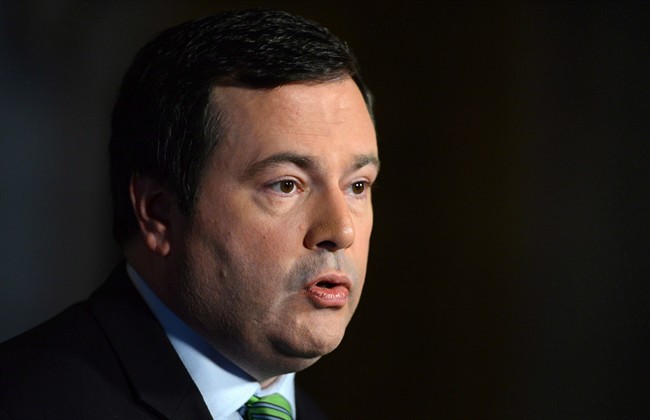BANFF, Alta. – A little-known dark period of Canadian history is now a permanent exhibit in Banff National Park.

The exhibit “Enemy Aliens, Prisoners of War: Canada’s First World War Internment Operations 1914-1920” marks the thousands of Canadians who were taken prisoner by their own country during the First World War.
The 8,500 civilian prisoners, most of Ukrainian descent, were arrested and held in internment camps only because they were originally from Eastern Europe.
Federal Multiculturalism Minister Jason Kenney said the event is something he recalls with “sadness and some shame.”
“These sons and daughters of Europe, proud Canadians all, were arrested, detained and transported to one of 24 internment camps like this,” said Kenney Friday.
“They were put to work in what today would only be described as slave labour. In unthinkable conditions, without contact with their families, with their communications being monitored. They were treated quite literally as enemy aliens.”
The prisoners were deemed to be a threat to Canada and sent to 24 internment camps across the country, four of which were in the Canadian Rockies.
While most people are aware of the internment of Japanese Canadians in the Second World War, the First World War camps are an often overlooked part of Canadian history.
The Harper government set up the $10 million Canadian First World War Internment Recognition Fund in 2008 to support projects commemorating the experience of the thousands of Ukrainians and other Europeans interned between 1914 and 1920 and the many others who suffered a suspension of their civil liberties.
- Canadian man dies during Texas Ironman event. His widow wants answers as to why
- On the ‘frontline’: Toronto-area residents hiring security firms to fight auto theft
- Honda’s $15B Ontario EV plant marks ‘historic day,’ Trudeau says
- Canadians more likely to eat food past best-before date. What are the risks?
“Some tragically even died in these places of internment and all of them undoubtedly felt a sense of betrayal that,” Kenney added.
“Many, when they returned home, simply wanted to put it behind them and I know amongst many of you who had parents and grandparents who were interned in these places but did not want to tell the stories, and so it was lost in history.”
Andrea Malysh said her great-grandfather was put in one of the camps and it’s something that was never discussed in her home. She said it wasn’t until she was an adult that she learned about what had happened to her family.
“I’m from Vernon, B.C. I went to high school on the grounds where the internment camp was, it was never taught in our high school. I had no knowledge that it happened,” said Malysh.
“It’s very important that this piece of forgotten history is told to Canadians. It’s important that Canadians know the history so it will not be repeated again.”
The exhibit is housed in a simple building. It is slightly up a hill from where the Banff internment camp was located. There is nothing to indicate the facility had been there. It is overgrown with brush and trees.
It is a painful part of Canadian history but descendants say they would rather the world know about it.
“It’s a crummy bit of history but it’s our history and it should be known,” said Dr. Ted Sosiak, a physician from Toronto whose grandfather was an internee in Kingston, Ont.
“We’re trying to change the lack of knowledge. It doesn’t happen instantly. It takes a bit of time.”
More than 100 people died working in the camps. Six were shot and killed trying to escape.
Life was hard — they were housed behind high barbed-wire fences and put to work clearing trees and building a road through the Castle Mountain area in the summer months. They were relocated near Banff’s Cave and Basin Historic Site when temperatures began to plummet in the winter.
The daily routine was eight hours of labour, but the march to and from the work site sometimes meant 13-hour days.
“You can never go back in history and undo a terrible injustice. But what you can do is at least recognize that it happened, express regret and teach future generations to avoid its repetition,” said Kenney.



Comments